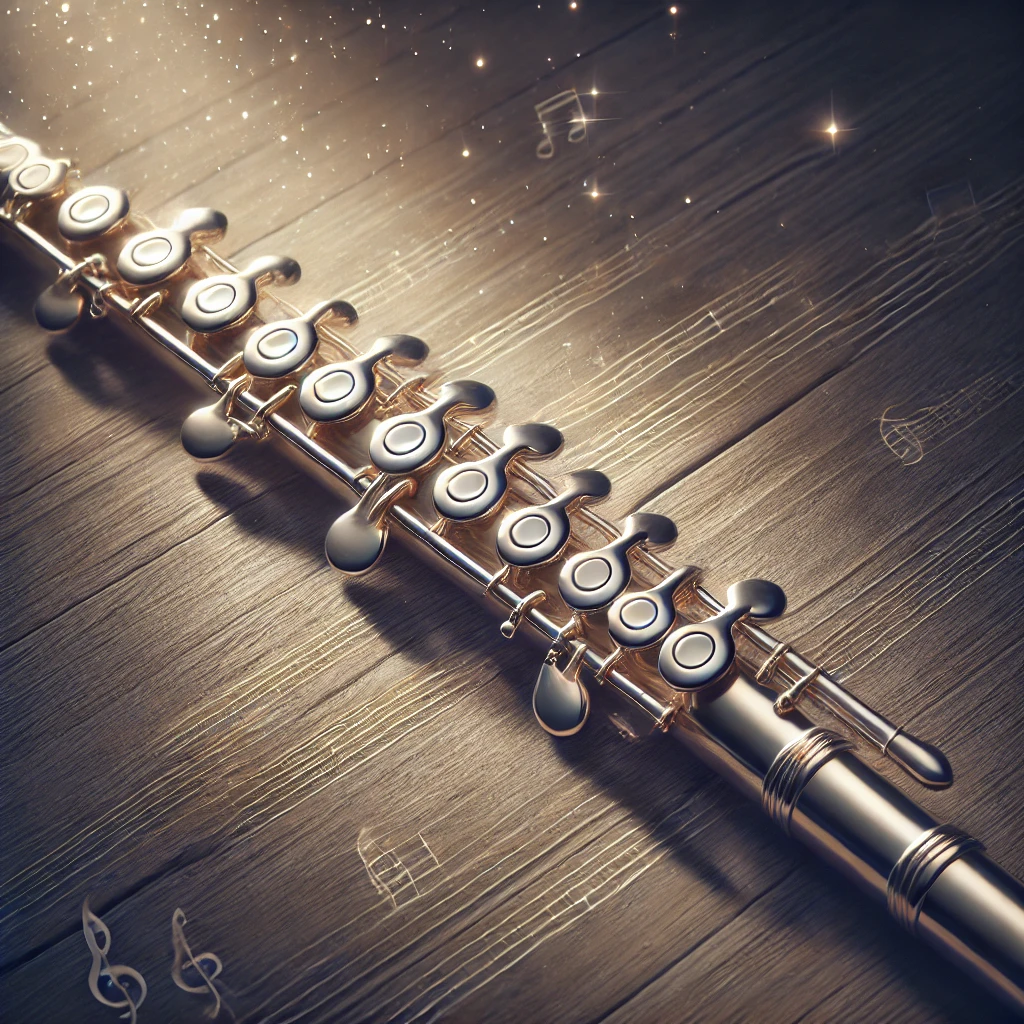The Magnificent World of Bass Saxophone Saxophones
Have you ever heard the deep, resonant tones of a bass saxophone and felt it vibrate through your entire body? 🎵 I still remember the first time I encountered this magnificent instrument during a jazz festival in New Orleans. The performer effortlessly produced those rich, powerful bass notes that seemed to envelop the entire venue. That experience sparked my fascination with bass saxophones, and today, I’m excited to share everything I’ve learned about these remarkable instruments with you.
Bass saxophones represent the gentle giants of the saxophone family, offering musicians access to captivating low-register sounds that can transform any musical arrangement. Whether you’re a seasoned saxophonist looking to expand your collection or a curious musician interested in exploring new sonic territories, bass saxophones open up a world of creative possibilities.
In this comprehensive guide, we’ll journey through the fascinating history of bass saxophones, explore their unique characteristics, and provide practical advice for selecting and maintaining these extraordinary instruments. So, let’s dive into the deep, resonant world of bass saxophones and discover what makes them so special! ⚡
The Rich History of Bass Saxophone Saxophones: From Classical Roots to Modern Jazz 🕰️
The Birth of the Bass Saxophone Saxophones
The story of bass saxophones begins with Adolphe Sax, the Belgian instrument maker who revolutionized the music world in the 1840s. While developing his new family of instruments, Sax envisioned a complete range that could blend the agility of woodwinds with the power of brass. Consequently, the bass saxophone was among the original instruments he patented in 1846, designed to provide a solid foundation for his saxophone family.
Initially, bass saxophones found their place in military bands and orchestras throughout Europe. Their powerful projection made them particularly valuable in outdoor performances, where their distinctive voice could cut through even in challenging acoustic environments. However, the journey of bass saxophones was just beginning, and they would soon find new contexts to showcase their unique capabilities.
Evolution Through Musical Eras
As musical styles evolved through the late 19th and early 20th centuries, bass saxophones adapted to changing tastes and requirements. During the vaudeville era, these instruments became popular for their novelty value and impressive visual presence. Meanwhile, in classical settings, composers like Sergei Prokofiev and Maurice Ravel occasionally incorporated bass saxophones into their orchestrations for special effects and tonal colors.
The true renaissance for bass saxophones, however, came with the emergence of jazz. In the 1920s and 1930s, as big bands rose to prominence, bass saxophones found a natural home providing the foundational low end for saxophone sections. Musicians like Adrian Rollini and Coleman Hawkins demonstrated the instrument’s potential not just as a supporting voice but as a surprisingly agile solo instrument.
Contemporary Renaissance
After a period of relative obscurity during the mid-20th century, bass saxophones have experienced a remarkable revival in recent decades. Modern musicians have rediscovered these instruments, incorporating them into diverse genres from avant-garde jazz to contemporary classical music and even rock.
Today, innovative performers like Colin Stetson and Roscoe Mitchell have pushed the boundaries of what’s possible with bass saxophones, developing extended techniques and exploring new sonic territories. Additionally, improved manufacturing processes have made these once-rare instruments more accessible to musicians at various levels, contributing to their growing popularity.
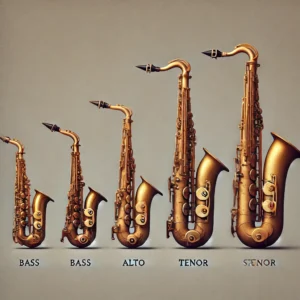
Understanding the Bass Saxophone: Characteristics and Features 🔍
Physical Dimensions and Design
The bass saxophone immediately commands attention with its impressive size. Typically standing around 5 feet tall (approximately 1.5 meters), these instruments feature a dramatically curved body that makes them manageable despite their dimensions. The large bell, extending upward, contributes to their distinctive silhouette and unique acoustic properties.
Most bass saxophones are pitched in B♭, placing them one octave below the tenor saxophone and two octaves below the soprano. This deep register gives them their characteristic rich, resonant tone that can serve as a solid foundation for any ensemble.
Tonal Characteristics
What truly sets bass saxophones apart is their distinctive voice. These instruments produce a warm, dark tone with remarkable depth and resonance. In the hands of a skilled player, a bass saxophone can be surprisingly versatile, capable of everything from gentle, breathy textures to powerful, room-filling declarations.
The lower register has a throaty, robust quality that can add weight and substance to ensemble passages. Meanwhile, the middle register offers surprising clarity, allowing for melodic playing that cuts through despite the instrument’s size. Even the upper register, while challenging to control, can produce hauntingly beautiful tones when approached with proper technique.
Key System and Mechanics
Bass saxophones utilize the same basic Boehm-inspired key system as their smaller cousins, with some adaptations to accommodate their larger size. The spacing between keys is typically wider, and the keys themselves are larger to facilitate comfortable playing. Some modern models incorporate ergonomic improvements like adjustable thumb rests and reinforced key posts to support the substantial mechanics.
One notable feature of many bass saxophones is the extension to low A, providing an additional semitone below the standard B♭ saxophone range. This extension, while not universal, offers valuable additional low-end capabilities that can be particularly useful in ensemble settings.
Why Choose a Bass Saxophone Saxophones? Unique Musical Applications 🎵
Ensemble Roles
In traditional settings like concert bands or saxophone quartets, bass saxophone saxophones excel at providing a solid harmonic foundation. Their powerful low register can replace or reinforce bass lines typically handled by tubas or string basses, offering a different timbral color with the characteristic saxophone expressiveness.
For jazz orchestras and big bands, bass saxophone saxophones add depth and warmth to the saxophone section, creating a full-bodied sound that’s difficult to achieve without their unique voice. When paired with baritone saxophones, they form a powerful low-end team that can drive an entire ensemble.
Solo Possibilities
Despite their size, bass saxophone saxophones offer surprising capabilities as solo instruments. Their expressive range allows for everything from haunting ballads to energetic, technical passages. The instrument’s natural projection means soloists can fill a room without amplification, while its distinctive timbre ensures it will stand out in any musical context.
Modern performers have expanded the solo repertoire for bass saxophone saxophones through commissioned works and innovative improvisational approaches. These developments have demonstrated that these instruments can transcend their traditional supporting role to take center stage in contemporary music.
Creative and Experimental Applications
Beyond conventional applications, bass saxophone saxophones have found their way into experimental and avant-garde contexts. Their extended techniques include multiphonics (producing multiple tones simultaneously), slap tonguing, and circular breathing, all of which open up new sonic possibilities.
Some musicians have also explored the percussive potential of bass saxophone saxophones, utilizing key clicks and other techniques to create rhythmic textures. Others have incorporated electronic processing to transform and expand the instrument’s natural sound. These innovative approaches continue to redefine what’s possible with bass saxophones in the 21st century.

Choosing Your Bass Saxophone: A Buyer’s Guide ✅
New vs. Vintage Instruments
When entering the world of bass saxophone saxophones, one of the first decisions you’ll face is whether to pursue a new or vintage instrument. Each option offers distinct advantages worth considering carefully.
Vintage bass saxophone saxophones, particularly American and French models from the early 20th century, are prized for their distinctive character and craftsmanship. Instruments from manufacturers like Conn, Buescher, and Selmer Paris often feature unique design elements and tonal qualities that modern production sometimes doesn’t replicate. However, these instruments typically require restoration and ongoing maintenance, which can add significantly to their cost.
Modern bass saxophone saxophones benefit from contemporary manufacturing techniques and ergonomic improvements. Companies like Yanagisawa B-992 and Selmer Paris Series III produce high-quality instruments with consistent intonation and reliable mechanics. For many players, especially those new to bass saxophone, these advantages make new instruments the more practical choice.
Key Features to Consider
When evaluating potential bass saxophone saxophones, several key features deserve special attention:
- Range extension: Many bass saxophone saxophones offer an extension to low A, providing valuable additional range. This feature is particularly useful for ensemble playing and contemporary repertoire.
- Key layout and ergonomics: Given the instrument’s size, comfortable key placement is essential for extended playing. Look for adjustable thumb rests and thoughtfully positioned key pearls.
- Materials and finish: Traditional brass construction with lacquer finish remains standard, but some manufacturers offer silver or even gold plating, which can subtly affect both tone and durability.
- Case and transport solutions: Given their size, appropriate cases and transport options are crucial for bass saxophone saxophones. Some manufacturers include wheeled cases designed specifically for these instruments.
Budget Considerations
Bass saxophone saxophones represent a significant investment, with prices typically exceeding those of more common saxophone saxophones. Entry-level student models like the Jupiter JBS1000 start around $7,000, while professional instruments from premium manufacturers can exceed $20,000.
For those with limited budgets, alternative approaches include:
- Rental programs: Some specialty retailers offer rental options for bass saxophone saxophones, allowing players to access these instruments without the full upfront investment.
- Educational discounts: Students and educational institutions may qualify for special pricing from certain manufacturers.
- Restored vintage instruments: Well-restored vintage bass saxophone saxophones can sometimes offer excellent value, combining classic craftsmanship with modern playability at intermediate price points.
Top Bass saxophone Saxophones on the Market Today 🏆
Professional Models
For serious performers and recording artists, these professional-grade instruments offer the ultimate in craftsmanship and tonal possibilities:
1. Selmer Paris Series III Bass Saxophone The Selmer Series III represents the gold standard for many professional saxophonists. Hand-crafted in France, these instruments feature impeccable intonation, responsive key action, and a warm, centered tone that projects beautifully. The Series III bass saxophone includes a low A extension and benefits from Selmer’s legendary build quality.
2. Yanagisawa B-992 Bass Saxophone Yanagisawa has earned a reputation for extraordinary precision in manufacturing, and their B-992 exemplifies this approach. This professional bronze model offers exceptional response throughout all registers, with a slightly brighter character than some other professional models. Its ergonomic key layout makes it relatively comfortable despite the instrument’s size.
3. P. Mauriat PMBS-300GL Bass Saxophone P. Mauriat has emerged as a major player in the professional saxophone market, offering hand-crafted instruments at competitive price points. Their PMBS-300GL features a gold lacquer finish over a hand-hammered brass body, producing a rich, complex tone with excellent projection.
Intermediate Options
For advancing students and serious amateurs, these instruments balance quality with more accessible pricing:
1. Keilwerth SX90 Bass Saxophone Keilwerth’s distinctive manufacturing approach includes hand-hammered tone holes and a slightly heavier build than many competitors. The result is a bass saxophone with a powerful, dark tone and excellent durability. While still a significant investment, the SX90 offers professional-level features at a somewhat more accessible price point.
2. Jupiter JBS1100 Bass Saxophone Jupiter has established itself as a reliable manufacturer of student and intermediate instruments. Their JBS1100 offers solid construction, reasonable intonation, and dependable mechanics at a price point that makes bass saxophone more accessible to educational programs and developing players.
Student Models and Budget Options
For those entering the world of bass saxophone or working with limited resources:
1. Allora AABS-501 Bass Saxophone The Allora AABS-501 represents one of the more affordable new bass saxophone saxophones on the market. While it doesn’t offer the refinement of professional models, it provides a functional introduction to the instrument at a relatively accessible price point, making it suitable for educational settings or players exploring the instrument for the first time.
2. Restored Vintage Options Well-restored vintage instruments, particularly from American manufacturers like Conn and Buescher, can offer excellent value for budget-conscious players. Models like the Conn 14M “Wonder” bass saxophone from the 1920s and 1930s are highly regarded when properly restored and can sometimes be found at prices competitive with new intermediate instruments.
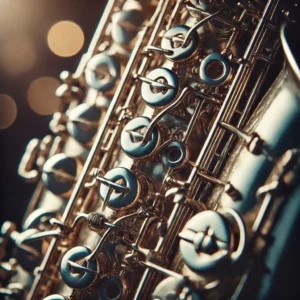
Bass Saxophone Comparison: Finding Your Perfect Match 📊
Comparison Table of Top Models
| Model | Price Range | Key Features | Best For |
|---|---|---|---|
| Selmer Paris Series III | $20,000-$25,000 | Low A extension, Superior intonation, Hand-crafted | Professional performers, Recording artists |
| Yanagisawa B-992 | $18,000-$22,000 | Bronze construction, Precise mechanics, Bright projection | Jazz soloists, Professional ensembles |
| P. Mauriat PMBS-300GL | $14,000-$16,000 | Hand-hammered body, Gold lacquer, Rich tone | Versatile professionals, Value-conscious artists |
| Keilwerth SX90 | $12,000-$14,000 | Hand-hammered tone holes, Durable construction | Advancing students, Semi-professionals |
| Jupiter JBS1100 | $8,000-$10,000 | Reliable mechanics, Consistent intonation | Educational settings, Developing players |
| Allora AABS-501 | $6,000-$7,500 | Budget-friendly, Basic functionality | Beginners, School programs |
Ready to elevate your musical journey with a bass saxophone? Click through any of the highlighted models above to check current pricing and availability on Amazon! Your perfect bass saxophone is just a click away. ⚡
Essential Accessories for Bass Saxophone Players 🛠️
Mouthpieces and Reeds
The mouthpiece and reed combination significantly impacts a bass saxophone’s playability and tonal character. While many new instruments come with serviceable mouthpieces, upgrading can dramatically improve your playing experience:
- Yanagisawa Bass Saxophone Mouthpiece offers excellent response and balanced resistance, making it popular for classical and concert band settings.
- JodyJazz DV Bass Saxophone Mouthpiece provides enhanced projection and flexibility for jazz and commercial playing contexts.
For reeds, most bass saxophonists use baritone saxophone reeds. Popular options include:
- D’Addario Select Jazz Baritone Saxophone Reeds for jazz and contemporary styles
- Vandoren Traditional Baritone Saxophone Reeds for classical and concert applications
Support Systems
Given their substantial weight, proper support is essential for comfortable bass saxophone playing:
- Hercules Saxophone Stand with Bass Saxophone Peg provides secure support during breaks and prevents damage from improper storage.
- Jazzlab SAXHOLDER Saxophone Harness offers neck-friendly support that distributes the instrument’s weight across the shoulders rather than suspending it from the neck.
Maintenance Supplies
Proper maintenance ensures your bass saxophone’s longevity and reliable performance:
- Selmer Saxophone Care Kit includes essential cleaning materials specifically sized for larger saxophones.
- Key Oil and Lubricant Set keeps the extensive key mechanism functioning smoothly.
- Microfiber Polishing Cloths (Extra Large) help maintain the instrument’s finish and remove fingerprints.
Mastering the Bass Saxophone: Techniques and Practice Approaches 📝
Developing Proper Technique
The bass saxophone’s size creates unique technical challenges that require specific approaches:
Breath Support and Embouchure Effective breath support becomes especially crucial for bass saxophone due to the instrument’s large air chamber. Developing diaphragmatic breathing techniques through regular practice with breathing exercises can significantly improve tone production and endurance.
For embouchure, most players benefit from a slightly looser approach than they might use on smaller saxophones. This relaxed embouchure, combined with firm corners, allows for proper reed vibration without excessive tension or fatigue.
Fingering and Hand Position The wider key spacing on bass saxophone saxophones necessitates adjustments to hand position and finger technique. Regular practice of scale patterns at slow tempos helps develop the necessary reach and coordination. Many players find that slightly flatter finger positions, with fingers more parallel to the keys rather than curved, facilitate more comfortable technique on these larger instruments.
Physical Conditioning Playing bass saxophone can be physically demanding. Incorporating regular stretching and strengthening exercises for the back, shoulders, and arms into your practice routine helps prevent strain and injury during extended playing sessions.
Practice Strategies
Effective practice approaches for bass saxophone often differ from those used for smaller members of the saxophone family:
Interval Sessions Rather than marathon practice sessions, bass saxophonists typically benefit from shorter, more frequent practice intervals. This approach helps build endurance gradually while avoiding fatigue-related tension or strain.
Targeted Register Work Dividing practice time to address specific register challenges proves particularly valuable. The extreme low register often requires focused attention to develop clean articulation and even tone, while the upper register benefits from exercises that build control and stability.
Recording and Self-Evaluation Recording practice sessions provides valuable feedback on tone production and projection, which can be difficult to assess accurately while playing such a large instrument. Regular critical listening helps identify areas for improvement in fundamentals like intonation, articulation, and tonal consistency.
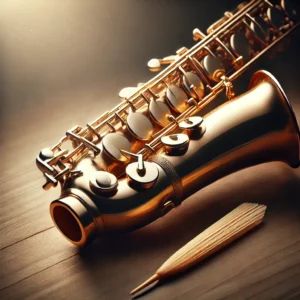
Bass saxophone Saxophones in Contemporary Music: Finding Your Voice 🎸
Genre Exploration
The bass saxophone’s versatility allows it to contribute effectively across diverse musical contexts:
Jazz and Improvisation In jazz settings, bass saxophone saxophones excel both in ensemble roles, providing powerful low-end support to big bands, and as surprisingly agile solo voices. Players like Scott Robinson have demonstrated the instrument’s capabilities in everything from traditional swing to free jazz.
Modern jazz composers increasingly write specifically for bass saxophone, recognizing its unique tonal qualities. For improvisation, the instrument’s voice-like qualities in its middle register make it particularly effective for expressive ballad playing.
Classical and Contemporary Concert Music Contemporary composers have embraced the bass saxophone’s expressive potential in concert music. Works by composers like Philip Glass and Karlheinz Stockhausen feature the instrument prominently, exploiting its dramatic presence and remarkable dynamic range.
In saxophone quartets and larger saxophone ensembles, bass saxophone saxophones provide a solid foundation that transforms the group’s overall sound, adding depth and resonance that smaller instruments alone cannot achieve.
Rock, Pop, and Experimental Music Bands across genres have discovered the bass saxophone’s potential for creating distinctive textures. Groups like Morphine famously built their sound around the instrument, while avant-garde and experimental ensembles continue to explore its extended techniques and unconventional applications.
Finding Opportunities to Perform
For bass saxophonists seeking performance opportunities, several approaches prove particularly effective:
Community Ensembles Many community concert bands and jazz ensembles welcome bass saxophonists, as these groups often lack the distinctive low-end that these instruments provide. These settings offer valuable experience while connecting players with the broader musical community.
Saxophone-Specific Groups Saxophone quartets, quintets, and larger saxophone ensembles provide natural contexts for bass saxophone. These groups frequently perform in educational settings, community events, and classical concert series.
Creating Your Own Opportunities Many successful bass saxophonists have created their own performance vehicles by forming ensembles specifically designed to showcase the instrument’s capabilities. This entrepreneurial approach allows players to explore repertoire and contexts that highlight their unique instrumental voice.
Maintaining Your Bass Saxophone: Care and Preservation 🧰
Regular Maintenance Routines
Proper maintenance ensures your bass saxophone’s longevity and reliable performance:
Daily Care After each playing session, thorough swabbing removes moisture from the instrument’s extensive tubing, preventing pad damage and corrosion. Wiping down the body and keys with a clean microfiber cloth removes oils and fingerprints that could eventually damage the finish.
Pay special attention to the large bow section, where moisture frequently accumulates. Some players use specialized flexible swabs designed specifically for accessing this challenging area.
Weekly Maintenance Weekly maintenance should include more detailed cleaning and inspection. Check for any loose screws or springs, particularly on the lower stack keys where the mechanical advantage of the large keys can place additional stress on components.
Periodically applying a small amount of key oil to contact points prevents unnecessary wear and keeps action smooth and quiet. However, avoid over-oiling, as excess lubricant can attract dust and create more problems than it solves.
Professional Service Even with diligent home maintenance, professional service remains essential. Most players benefit from annual check-ups with a qualified repair technician who specializes in larger saxophone saxophones. These experts can address developing issues before they become serious problems and perform adjustments that maintain optimal playability.
Storage and Transport
The bass saxophone’s size creates unique storage and transport challenges:
Proper Cases A high-quality, hard-shell case with proper interior padding provides essential protection. Cases designed specifically for bass saxophone saxophones, like the ProTec PB304CT Bass Saxophone Case, include wheels and ergonomic handles that facilitate safer, more comfortable transport.
Climate Considerations Extreme temperature and humidity fluctuations can damage any saxophone, but bass saxophone saxophones’ large surface area makes them particularly vulnerable. When possible, store your instrument in a climate-controlled environment, away from heating vents, air conditioners, and direct sunlight.
For unavoidable exposure to challenging conditions during transport or storage, consider using humidity control systems designed for musical instruments to maintain stable conditions within the case.
Frequently Asked Questions About Bass saxophone Saxophones ❓
Are bass saxophone saxophones difficult to learn?
While bass saxophone saxophones do present unique challenges due to their size and air requirements, players with experience on other saxophones can typically adapt relatively quickly. The fingering system remains fundamentally the same as other saxophones, though the wider spacing requires adjustment.
Complete beginners may find starting on a smaller saxophone more manageable, but motivated students can certainly begin directly on bass saxophone with proper guidance. The instrument’s responsive low register often proves easier for beginners to produce a satisfying tone on than the challenging low notes of smaller saxophones.
How much do bass saxophone saxophones weigh?
Most bass saxophone saxophones weigh between 15 and 20 pounds (approximately 7-9 kg), making them substantially heavier than alto or tenor saxophones. This weight, combined with their awkward proportions, makes proper support systems essential for comfortable playing.
Modern support harnesses that distribute weight across the shoulders rather than suspending the instrument from the neck significantly improve playing comfort for many bassists.
Can I play bass saxophone if I already play another saxophone?
Absolutely! Most professional bass saxophonists double on multiple members of the saxophone family. The fundamental techniques transfer readily, though you’ll need to adjust to the larger mouthpiece, increased air requirements, and wider key spacing.
Many players find that skills developed on bass saxophone—particularly breath support and embouchure control—positively impact their playing on smaller saxophones as well, making doubling a mutually beneficial practice.
How rare are bass saxophone saxophones?
While less common than alto or tenor saxophones, basssaxophone saxophones have become increasingly accessible in recent years. Most major manufacturers now produce them, and the secondhand market offers various options at different price points.
Finding opportunities to try bass saxophone saxophones before purchasing can still present challenges. University music departments, professional saxophone specialists, and some well-equipped music stores may have instruments available for testing. Saxophone-specific events and conferences often feature displays where multiple models can be compared directly.
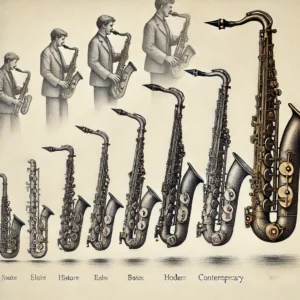
Conclusion: Embracing the Bass Saxophone Journey 🚀
The bass saxophone offers a unique combination of powerful presence, distinctive voice, and surprising versatility that continues to attract musicians across genres and traditions. Whether you’re drawn to its foundational role in ensembles, its potential as an expressive solo voice, or its capacity for sonic exploration in experimental contexts, this remarkable instrument rewards dedicated study with musical possibilities unavailable elsewhere.
As manufacturing continues to improve and more players discover these instruments, we’re witnessing an exciting renaissance in bass saxophone performance and repertoire. New compositions, innovative techniques, and creative applications continue to expand what’s possible with these gentle giants of the saxophone family.
For those considering adding a bass saxophone to their instrumental arsenal, today’s market offers more options than ever before, from professional hand-crafted instruments to more accessible intermediate and student models. With proper research, careful selection, and commitment to developing the specific techniques these instruments require, bass saxophonists can access a world of profound musical expression.
Ready to begin your bass saxophone journey? Explore the instruments and accessories highlighted throughout this article on Amazon, where you’ll find competitive pricing, detailed specifications, and helpful reviews from fellow musicians. Your musical adventure awaits! 🎵
More FQAs:
❓ What is a bass saxophone saxophones?
✅ The bass saxophone saxophones is one of the largest and lowest-pitched saxophones, commonly used in jazz and orchestral music...
❓ How heavy is a bass saxophone saxophones?
✅ A typical bass saxophone saxophones weighs around 18-25 pounds (8-11 kg), requiring a sturdy stand or neck strap for support...
❓ Is the bass saxophone saxophones hard to play?
✅ Yes, due to its size and breath control requirements, the bass saxophone saxophones can be challenging, especially for beginners...
❓ What is the price range of a bass saxophone saxophones?
✅ Bass saxophone saxophones typically range from $5,000 to $20,000, depending on the brand, material, and craftsmanship...
❓ What is the difference between a bass saxophone saxophones and a baritone saxophone?
✅ The bass saxophone saxophones is larger and produces a deeper sound than the baritone saxophone saxophones, which is more common in modern music...
Recommended for You:
- Ultimate Guide to Bass Pickups: How to Achieve Incredible Sound in 2025
- Unleash Your Musical Potential with the Exceptional Squier Jazz Bass: A Complete Guide 2025
- Discover the Perfect Bass Guitar with Case: Ultimate Guide to Protect Your Investment 2025
Disclaimer: This article contains affiliate links. If you purchase products through these links, we may earn a small commission at no additional cost to you.


